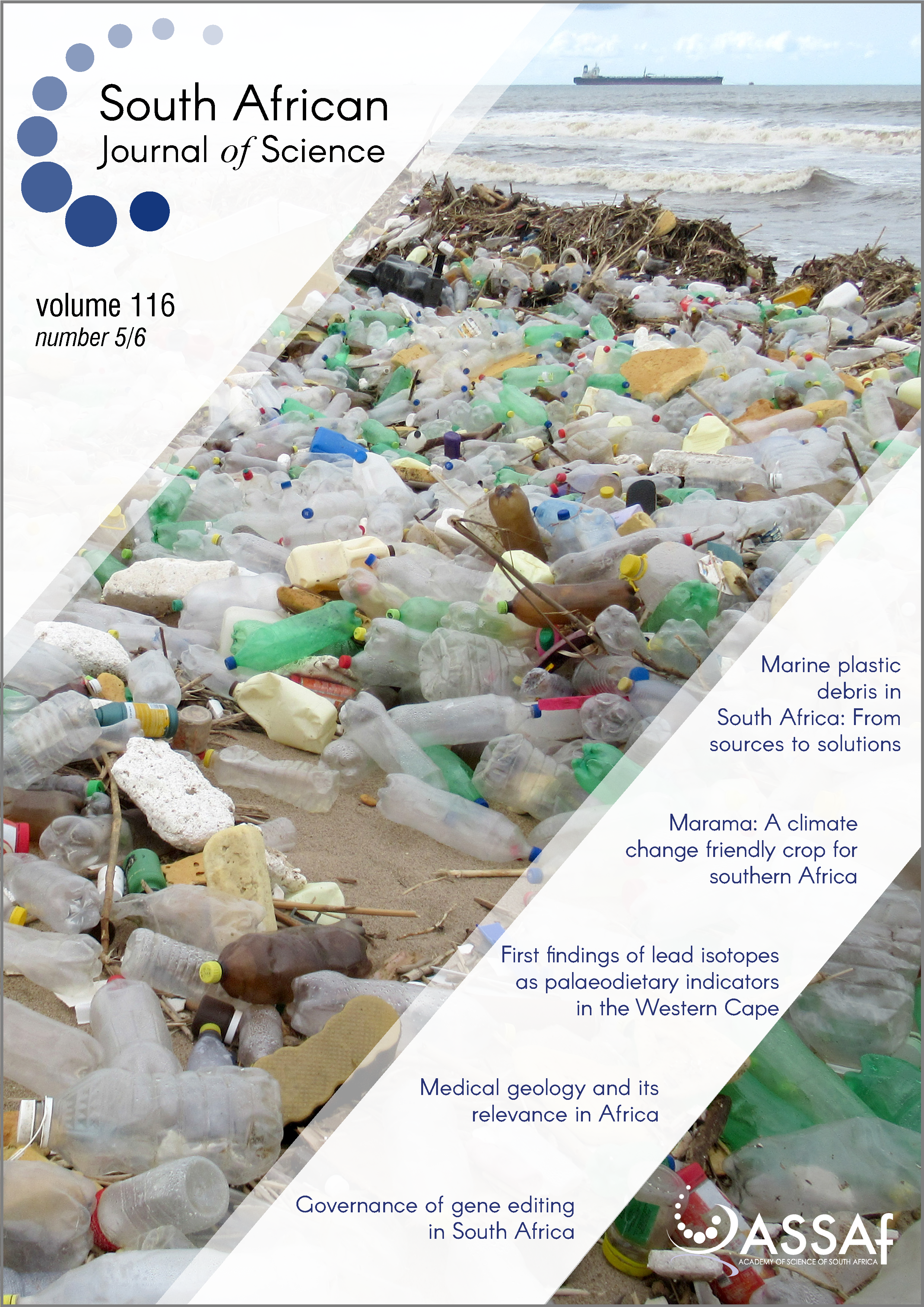Proximate and starch composition of marama (Tylosema esculentum) storage roots during an annual growth period
DOI:
https://doi.org/10.17159/sajs.2020/6782Keywords:
marama root, marama root starch, proximate analysis, starch granules, total starch, high amylose starchAbstract
The aim of this study was to determine the most suitable time for harvesting marama (Tylosema esculentum) root as an alternative source of novel starch by evaluating the quality of marama root and its starch during growth periods of 12 months. The effects of time on the proximate analysis of marama roots as well as the thermal properties, size and physicochemical properties of the starch were also investigated. Marama was planted in September and total starch of marama roots on both as is and dry bases increased significantly (p<0.05) from 24 g/kg to 115 g/kg and 259 g/kg to 601 g/kg, respectively, from 2 to 12 months after planting. Amylose content significantly (p<0.05) decreased from about 50.7% to 21.4% of the starch for the same time period. The size of marama root starch granules significantly (p<0.05) increased from 8.6 μm to 15.1 μm. The marama root harvested after 2 months had the highest crude protein content (33.6%). In terms of thermal properties, the peak temperature decreased significantly with time (ranging from 93.0 °C to 73.4 °C), while the ΔH increased significantly with time. The findings indicate that marama should be planted early in summer and harvested between 4 and 8 months for optimal starch before winter.
Significance:
- Proximate and starch characteristics of marama storage roots differ significantly with time of harvest. This suggests that desired functional properties can be achieved by controlling growth time. The marama root harvested at 4 months is highly nutritious, it has high protein content, starch that is high in amylose and is suitable for consumption as a fresh root vegetable in arid to semi-arid regions where few conventional crops are able to survive. Marama root is a climate smart crop and it could potentially contribute to food security in arid regions. The results obtained in this study suggest that the optimum time for harvesting marama as a root vegetable is at 4 months while the optimum time for harvesting marama for its starch is at 8 months. Younger roots have higher amylose, and hence higher gelatinisation temperatures, and therefore may be more suitable to be used as a coating during frying.
Published
Issue
Section
License

All articles are published under a Creative Commons Attribution 4.0 International Licence
Copyright is retained by the authors. Readers are welcome to reproduce, share and adapt the content without permission provided the source is attributed.
Disclaimer: The publisher and editors accept no responsibility for statements made by the authors
How to Cite
- Abstract 725
- PDF 642
- EPUB 235
- XML 445












.png)